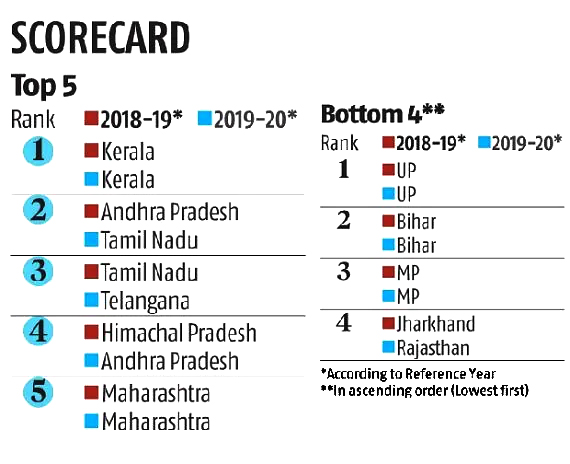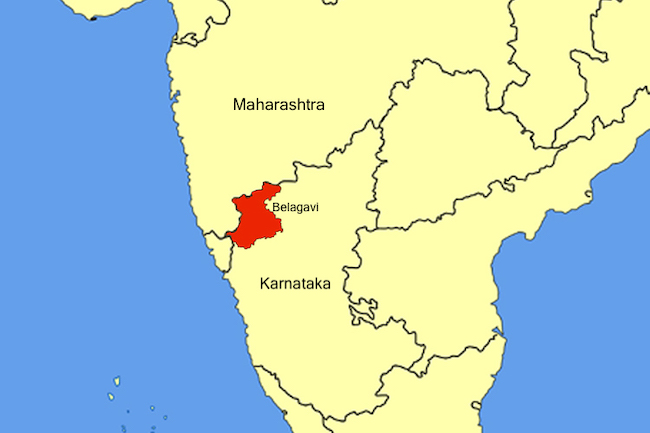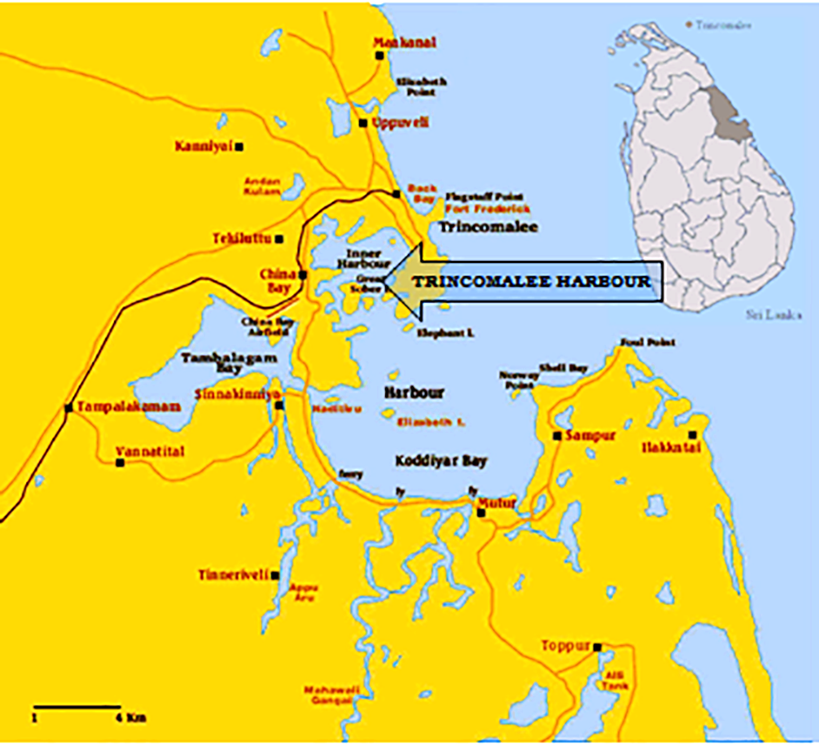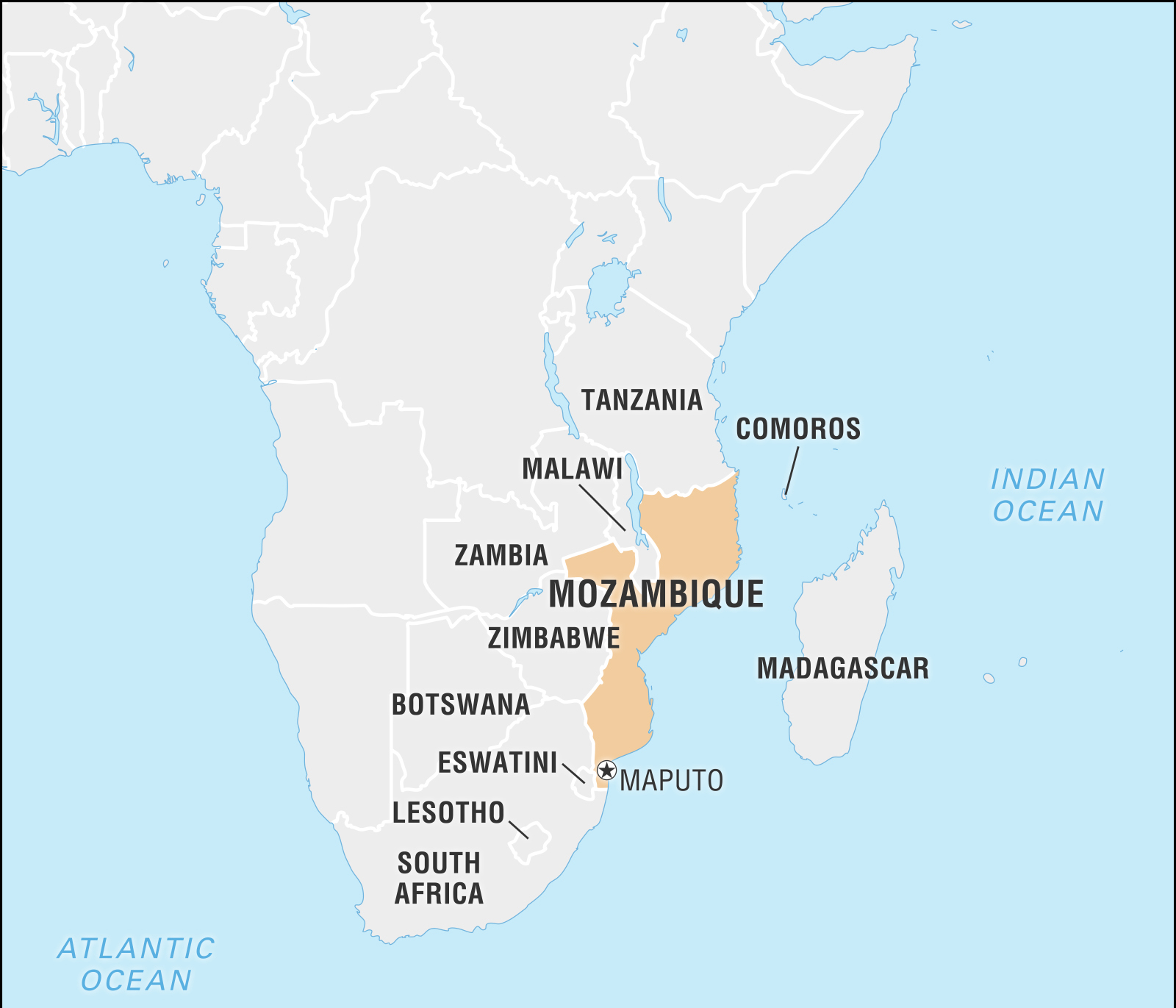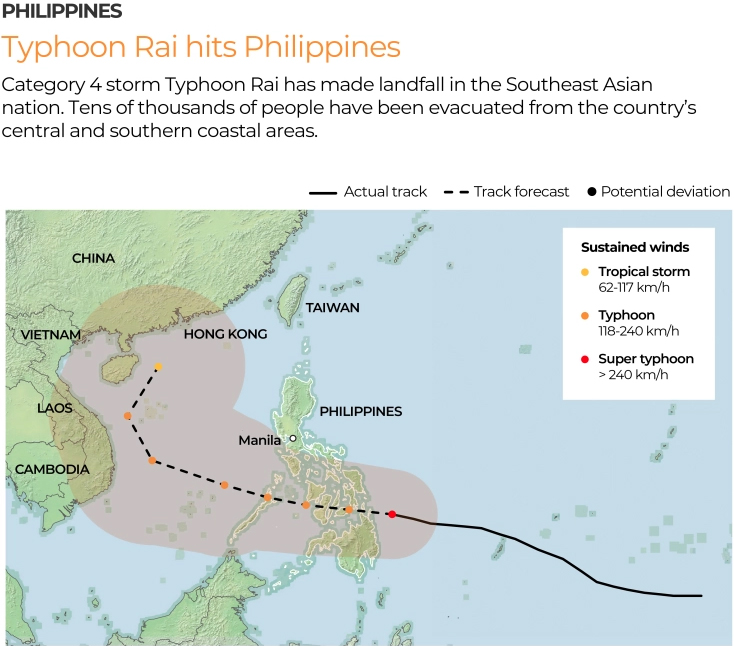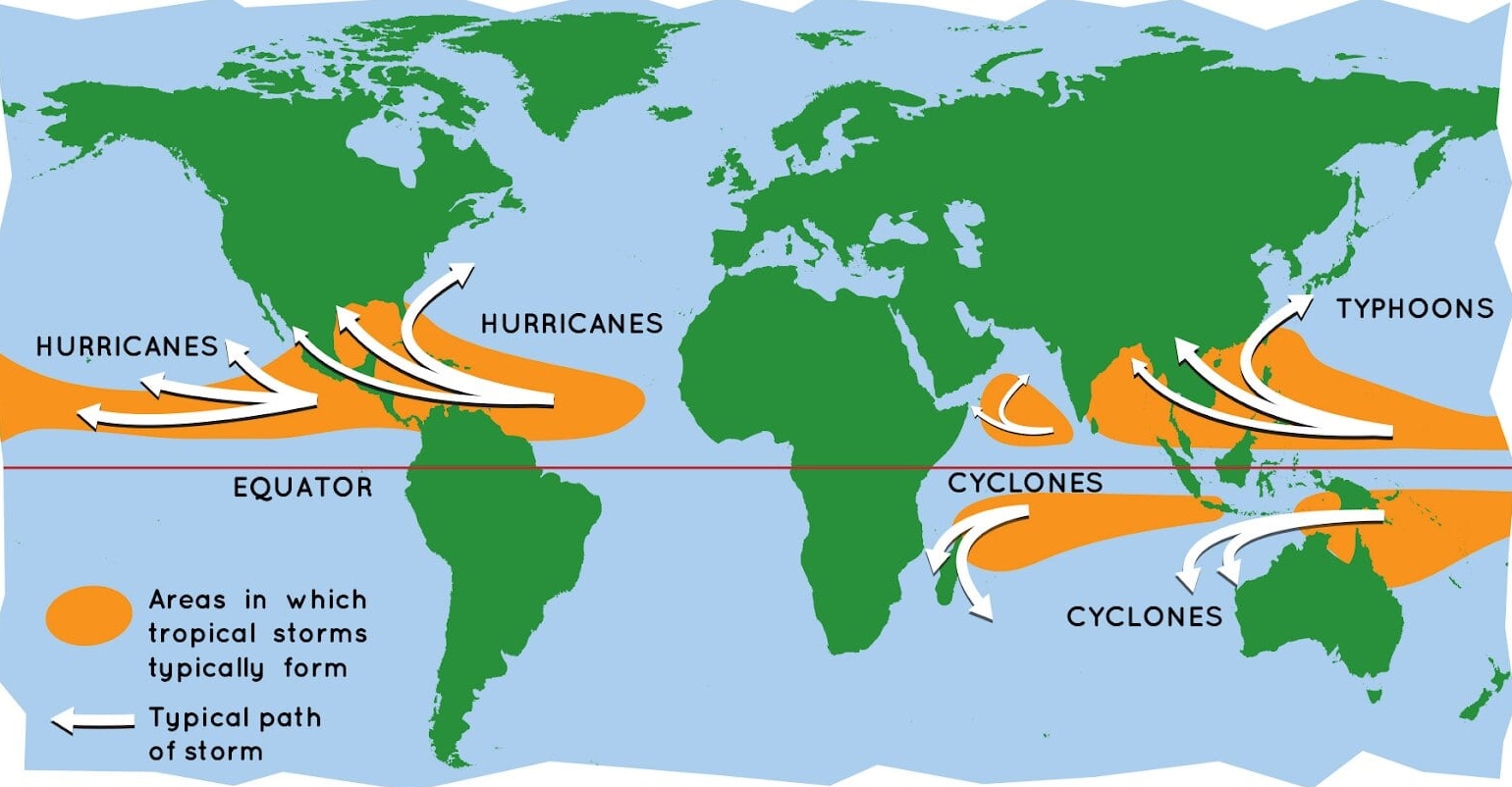Social Justice
Fourth Edition of State Health Index
For Prelims: About the Index, Ranking of States.
For Mains: Challenges of the Health Sector in India and Initiatives taken to address it
Why in News
NITI Aayog has released the fourth edition of the State Health Index for 2019–20.
- The report, titled “Healthy States, Progressive India”, ranks states and Union Territories on their year-on-year incremental performance in health outcomes as well as their overall status.
- Earlier, the Global Health Security (GHS) Index 2021, developed in partnership by the Nuclear Threat Initiative (NTI) and the Johns Hopkins Center was released. India, with a score of 42.8 (out of 100) has slipped by 0.8 points since 2019.
Key Points
- About:
- The State Health Index is an annual tool to assess the performance of states and UTs, which has been compiled and published since 2017.
- It is a weighted composite index based on 24 indicators grouped under the domains of ‘Health Outcomes’, ‘Governance and Information’, and ‘Key Inputs/Processes’.
- Health Outcomes:
- It includes parameters such as neonatal mortality rate, under-5 mortality rate, sex ratio at birth.
- Governance and Information:
- It includes parameters such as institutional deliveries, average occupancy of senior officers in key posts earmarked for health.
- Key Inputs/Processes:
- It consists of proportion of shortfall in health care providers to what is recommended, functional medical facilities, birth and death registration and tuberculosis treatment success rate.
- Health Outcomes:
- Developed By:
- NITI Aayog, with technical assistance from the World Bank, and in close consultation with the Ministry of Health and Family Welfare (MoHFW).
- Focus of the Fourth Edition:
- Round IV of the report focuses on measuring and highlighting the overall performance and incremental improvement of states and UTs over the period 2018–19 to 2019–20.
- Ranking of States:
- To ensure comparison among similar entities, the ranking is categorized as:
- Larger States:
- In terms of annual incremental performance, Uttar Pradesh, Assam and Telangana are the top three ranking states.
- Smaller States:
- Mizoram and Meghalaya registered the maximum annual incremental progress.
- Union Territories:
- Delhi, followed by Jammu and Kashmir, showed the best incremental performance.
- Overall:
- The top-ranking states were Kerala and Tamil Nadu among the ‘Larger States’, Mizoram and Tripura among the ‘Smaller States’, and Dadra and Nagar Haveli and Daman and Diu (DH&DD) and Chandigarh among the UTs.
- Larger States:
- To ensure comparison among similar entities, the ranking is categorized as:
- Significance of the Index:
- Policymaking:
- States use it in their policy making and resource allocation.
- This report is an example of both competitive and cooperative federalism.
- States use it in their policy making and resource allocation.
- Healthy Competition:
- The index encourages healthy competition and cross-learning among States and UTs.
- The aim is to nudge states/UTs towards building robust health systems and improving service delivery.
- Helpful in Achieving SDGs:
- The exercise is expected to help drive state and union territories' efforts towards the achievement of health-related Sustainable Development Goals (SDGs) including those related to Universal Health Coverage (UHC) and other health outcomes.
- Role in National Health Mission:
- The importance of this annual tool is reemphasized by MoHFW’s decision to link the index to incentives under the National Health Mission.
- Policymaking:
- Limitations of the Index:
- Not Covered Critical Areas:
- Some critical areas such as infectious diseases, noncommunicable diseases (NCDs), mental health, governance, and financial risk protection are not fully captured in the Health Index due to non-availability of acceptable quality of data on an annual basis.
- Limited Data:
- For several indicators, the data is limited to service delivery in public facilities due to paucity and uneven availability of private sector data on health services.
- For outcome indicators, such as Neonatal Mortality Rate, Under-five Mortality Rate, Maternal Mortality Ratio and Sex Ratio at Birth, data are available only for Larger States.
- For several indicators, the data is limited to service delivery in public facilities due to paucity and uneven availability of private sector data on health services.
- Without any Field Verification:
- For several indicators, Health Management Information System (HMIS) data and programme data were used without any field verification due to the lack of feasibility of conducting independent field surveys.
- Not Covered Critical Areas:
Related Initiatives
Indian Polity
Belagavi Border Dispute
For Prelims: SK Dhar committee, JVP Committee, Mahajan Committee, State Reorganization Act.
For Mains: Reorganization of States in India and related disputes.
Why in News
The decades-old dispute between Karnataka and Maharashtra over the Belagavi or as Maharashtra likes to call it the Belgaum district, is back in the headlines.
- Belgaum or Belagavi is currently part of Karnataka but is claimed by Maharashtra.
Key Points
- About:
- In 1957, slighted by the implementation of the States Reorganisation Act, 1956, Maharashtra demanded readjustment of its border with Karnataka.
- Maharashtra invoked Section 21 (2) (b) of the Act and submitted a memorandum to the Ministry of Home Affairs stating its objection to Marathi- speaking areas being added to Karnataka.
- It claimed an area of 2,806 square miles that involved 814 villages, and three urban settlements of Belagavi, Karwar and Nippani with a total population of about 6.7 lakh, all part of the Mumbai Presidency before independence.
- The villages are spread across Belagavi and Uttar Kannada in north-western Karnataka, and Bidar and Gulbarga districts in north-eastern Karnataka — all bordering Maharashtra.
- Later, when a four-member committee was formed by both States, Maharashtra expressed willingness to transfer predominantly Kannada-speaking 260 villages with a population of about 3.25 lakh and total area of 1,160 square miles.
- This was in lieu of accepting its demand for 814 villages and three urban settlements, which was turned down by Karnataka.
- Basis of Maharashtra’s Claim:
- Maharashtra’s claim to seek the readjustment of its border was on the basis of contiguity, relative linguistic majority and wishes of the people. If the claim over Belagavi and surrounding areas was based on Marathi-speaking people and linguistic homogeneity, it laid its claim over Karwar and Supa where Konkani is spoken by citing Konkani as a dialect of Marathi.
- Its argument was based on the theory of villages being the unit for calculation and enumerated linguistic population in each village. Maharashtra also points out the historical fact that the revenue records in these Marathi-speaking areas are also kept in Marathi.
- Karnataka’s Position:
- Karnataka has argued that the settlement of boundaries as per the States Reorganisation Act is final.
- The boundary of the State was neither tentative nor flexible. The State argues that the issue would reopen border issues that have not been contemplated under the Act, and that such a demand should not be permitted.
- Steps Taken to Resolve the Issue:
- In 1960, both States agreed to set up a four-man committee with two representatives from each State. Except on the issue of contiguity, the committee could not arrive at a unanimous decision.
- Between the 1960s and 1980s, chief ministers of Karnataka and Maharashtra have met several times to find a solution to the vexed issue but with no avail.
- Response of Union Government:
- The central government constituted the Mahajan Committee in 1966 to assess the situation. Representatives from both sides, Maharashtra and the then Mysore state were part of the committee.
- In 1967, the committee recommended that some villages in Karwar, Haliyal and Suparna talukas of Karnataka be given to Maharashtra but left Belagavi with the southern state.
- Response of the Supreme Court:
- In 2006, the Supreme Court held that the issue should be resolved through mutual negotiation and that linguistic criterion should not be considered as it may create more practical problems.
- The case is still being heard by the Supreme Court.
- Other Border Disputes between Different States:
Reorganization of States in India
- At the time of independence in 1947, India consisted of nearly 550 disjointed princely states.
- In 1950, the Constitution contained a four-fold classification of the states of the Indian Union—Part A, Part B, Part C and Part D States.
- Part-A states comprised nine erstwhile governor’s provinces of British India.
- Part-B states consisted of nine erstwhile princely states with legislatures.
- Part-C states consisted of the erstwhile chief commissioner’s province of British India and some of the erstwhile princely states.
- Part-D state comprised the Andaman and Nicobar Islands only.
- The grouping of states at the time was done on the basis of political and historical considerations rather than on linguistic or cultural divisions, but this was a temporary arrangement.
- On account of the multilingual nature and differences that existed between various states, there was a need for the states to be reorganized on a permanent basis.
- In this context, in 1948, SK Dhar committee - was appointed by the government to look into the need for the reorganization of states on a linguistic basis.
- The Commission preferred reorganisation of states on the basis of administrative convenience including historical and geographical considerations instead of on linguistic lines.
- This created much resentment and led to the appointment of another Linguistic Provinces Committee.
- In December 1948, the JVP Committee comprising Jawaharlal Nehru, Vallabh Bhai Patel and Pattabhi Sitaramayya was formed to study the issue.
- The Committee, in its report submitted in April 1949, rejected the idea of reorganisation of states on a linguistic basis but said that the issue could be looked at afresh in the light of public demand.
- However, due to protests, in October 1953, the Government of India created the first linguistic state, known as Andhra state, by separating the Telugu speaking areas from the Madras state.
- On 22nd December 1953, Jawaharlal Nehru appointed a commission under Fazl Ali to consider the reorganisation of states.
- The commission submitted its report in 1955 and it suggested that the whole country be divided into 16 states and three centrally administered areas.
- The government, while not agreeing with the recommendations entirely, divided the country into 14 states and 6 union territories under the States Reorganisation Act that was passed in November 1956.
- Even after the large-scale reorganization of the states in 1956, the political map of India underwent continuous changes due to the pressure of popular agitations and political conditions.
- On 5th August 2019, President of India in the exercise of the powers conferred by Clause (1) of Article 370 of the Constitution had issued the Constitution (Application to Jammu and Kashmir) Order, 2019.
- This divided the state of Jammu and Kashmir into two new Union Territories (UTs): Jammu & Kashmir, and Ladakh.
- Recently, Dadra and Nagar Haveli and Daman and Diu (Merger of Union Territories) Act, 2019 has merged the Union Territories (UTs) of Daman and Diu (D&D) and Dadra and Nagar Haveli (DNH).
- Presently, India comprises 28 states and 8 union territories.
Science & Technology
5G in India
For Prelims: 5G, IoT, big data, AI, edge computing, fourth industrial revolution.
For Mains:Uses of 5G, Challenges for 5G Rollout in India, Evolution of telecom technology
Why in News
Recently, the Department of Telecommunications (DoT) has announced that India's major metros will have 5G services next year.
- Like other global players, India had, in 2018, planned to start 5G services as soon as possible, with an aim to capitalise on the better network speeds and strength that the technology promised.
Key Points
- About 5G Technology:
- 5G is the 5th generation mobile network. It is a new global wireless standard after 1G, 2G, 3G, and 4G networks.
- It enables a new kind of network that is designed to connect virtually everyone and everything together including machines, objects, and devices.
- Internet speeds in the high-band spectrum of 5G has been tested to be as high as 20 Gbps (gigabits per second), while, in most cases, the maximum internet data speed in 4G has been recorded at 1 Gbps.
Evolution from First Generation to Fifth Generation
- 1G was launched in the 1980s and worked on analog radio signals and supported only voice calls.
- 2G was launched in the 1990s which uses digital radio signals and supports both voice and data transmission with a bandwidth of 64 Kbps.
- 3G was launched in the 2000s with a speed of 1 Mbps to 2 Mbps and it has the ability to transmit telephone signals including digitised voice, video calls and conferencing.
- 4G was launched in 2009 with a peak speed of 100 Mbps to 1 Gbps and it also enables 3D virtual reality.
- Different Bands of 5G:
- 5G mainly works in 3 bands, namely low, mid and high frequency spectrum — all of which have their own uses as well as limitations.
- Low Band Spectrum: In terms of coverage and speed of Internet and data exchange, the maximum speed is limited to 100 Mbps (Megabits per second).
- This means that telecom companies can use and install it for commercial cellphone users who may not have specific demands for very high speed Internet.
- However, the low band spectrum may not be optimal for specialised needs of the industry.
- Mid Band Spectrum: It offers higher speeds compared to the low band, but has limitations in terms of coverage area and penetration of signals.
- This band may be used by industries and specialised factory units for building captive networks that can be moulded into the needs of that particular industry.
- High Band Spectrum: It offers the highest speed of all the three bands, but has extremely limited coverage and signal penetration strength.
- This band greatly enhances futuristic 5G technology applications like Internet of Things (IoT) and smart technology but will require considerable infrastructure.
- Low Band Spectrum: In terms of coverage and speed of Internet and data exchange, the maximum speed is limited to 100 Mbps (Megabits per second).
- 5G mainly works in 3 bands, namely low, mid and high frequency spectrum — all of which have their own uses as well as limitations.
- Uses of 5G:
- Broadly speaking, 5G is used across three main types of connected services, including enhanced mobile broadband, mission-critical communications, and the massive IoT.
- Enhanced Mobile Broadband: In addition to making our smartphones better, 5G mobile technology can usher in new immersive experiences such as Virtual reality (VR) and Augmented Reality (AR) with faster, more uniform data rates, lower latency, and lower cost-per-bit.
- Mission-Critical Communications: 5G can enable new services that can transform industries with ultra-reliable, available, low-latency links like remote control of critical infrastructure, vehicles, and medical procedures.
- Massive Internet of Things : 5G is meant to seamlessly connect a massive number of embedded sensors in virtually everything through the ability to scale down in data rates, power, and mobility—providing extremely lean and low-cost connectivity solutions.
- Combined with IoT, cloud, big data, Artificial Intelligence, and edge computing, 5G could be a critical enabler of the fourth industrial revolution.
- Broadly speaking, 5G is used across three main types of connected services, including enhanced mobile broadband, mission-critical communications, and the massive IoT.
Note:
- India’s National Digital Communications Policy 2018 highlights the importance of 5G when it states that the convergence of a cluster of revolutionary technologies including 5G, the cloud, Internet of Things (IoT) and data analytics, along with a growing start-up community, promise to accelerate and deepen its digital engagement, opening up a new horizon of opportunities.
- Challenges for 5G Rollout in India:
- Low Fiberization Footprint: There is a need to upgrade fibre connectivity across India, which at present connects only 30% of India’s telecom towers.
- For an efficient 5G India launch and adoption, this number has to double.
- ‘Make in India’ Hardware Challenge: The ban on certain foreign telecom OEMs (original equipment manufacturer) upon which most of the 5G technology development depends, presents a hurdle in itself.
- High Spectrum Pricing: India’s 5G spectrum pricing is several times costlier than the global average.
- This will be of detriment to India’s cash-strapped telcos.
- Choosing the Optimal 5G Technology Standard: The tussle between the homegrown 5Gi standard and the global 3GPP standard needs to be concluded in order to hasten 5G technology implementation.
- While 5Gi brings obvious benefits, it also increases 5G India launch costs and interoperability issues for telcos.
- Low Fiberization Footprint: There is a need to upgrade fibre connectivity across India, which at present connects only 30% of India’s telecom towers.
Way Forward
- Boosting Domestic 5G Production: The country needs to encourage and boost its local 5G hardware manufacturing at an unprecedented rate if it needs to realise the 5G India dream.
- Pricing Rationalisation: Rationalisation of this spectrum pricing is needed so that the government generates adequate revenue from the auction without hampering implementation plans for 5G in India.
- Bridging the Rural-Urban Gap: 5G can be deployed at different band spectrums and at the low band spectrum, the range is much longer which is helpful for the rural areas.
International Relations
Trincomalee Oil Tank Farm Deal: India- Srilanka
For Prelims: Trincomalee oil tank farms deal, location of Trincomalee port, Katchatheevu Island Issue, Four-Pillar Initiative, India and Sri Lanka conducted joint Military exercises, Foreign Direct Investment (FDI), Lines of Credit, currency swap agreement.
For Mains: India-Sri Lanka Relations, Indo-Lanka Accord 1987, Issues in India-Sri Lanka Relations
Why in News
In the coming days, India and Sri Lanka are going to sign the long pending deal to jointly develop the Trincomalee oil tank farms.
- The signing of the deal will reflect a positive sign, amidst strained relationship between the two countries.
Key Points
- About Trincomalee Oil Tank Farms:
- The oil tank farm was built by the British during World War II as a refuelling station,
- It is located in ‘China Bay’ in close proximity to the internationally coveted deep water natural harbour of Trincomalee.
- The proposal of this joint development was envisaged 35 years ago, in the Indo-Lanka Accord 1987.
- It comprises 99 storage tanks, with a capacity of 12,000 kilolitres each, spread across Lower Tank farm and Upper Tank Farm.
- In 2003, Indian Oil Corporation set up its Sri Lankan subsidiary called Lanka IOC, to work on this oil farm.
- Currently, Lanka IOC runs 15 tanks. The new agreement is being negotiated for the remaining tanks.
- Significance of the deal:
- The Trincomalee Oil Tank Farms have been bestowed with several favourable factors of location. For example,
- Easily Accessible: It is located on a deep water natural harbour of Trincomalee.
- Strategic Location in the Indian Ocean: These oil farms are located along some of the world’s busiest shipping lanes.
- Thus, a well-developed oil storage facility and refinery adjacent to the Trincomalee Port would have great economic value for both India and Sri Lanka.
- The Trincomalee Oil Tank Farms have been bestowed with several favourable factors of location. For example,
Indo-Lanka Accord
- It is popularly referred to as the Rajiv-Jayewardene Accord, after its architects Prime Minister of India Rajiv Gandhi and Sri Lankan President J.R. Jayewardene. It was signed in 1987.
- It was signed on the pretext of the Civil War in Sri Lanka (between Tamils and Sinhala community).
- The accord sought to balance India’s strategic interests, interest of people of Indian origin in Sri Lanka and Tamil minority rights in Sri Lanka.
- The accord saw the placement of the Indian Peace Keeping Force (IPKF) in Sri Lanka to resolve the Sri Lankan Civil War.
- The accord also resulted in enactment of the thirteenth Amendment to the Constitution of Sri Lanka and the Provincial Councils Act of 1987.
- Issues in India-Sri Lanka Relations
- China’s Intervention: China’s rapidly growing economic footprint (and political clout as a corollary) in Sri Lanka is straining India-Sri Lanka relations.
- China is already the largest investor in Sri Lanka, accounting for 23.6% of the total Foreign Direct Investment (FDI) during 2010-2019 as against 10.4% from India.
- China is also one of the largest export destinations for Sri Lankan goods and holds over 10% of its external debt.
- China is also handling Hambantota Port of Sri Lanka, the port is viewed as a part of China’s String of Pearls Strategy.
- Katchatheevu Island Issue: India ceded the uninhabited island to its southern neighbour in 1974 under a conditional accord.
- However, many times the fisherman issue arises more out of a domestic tussle rather than the India-Sri Lanka view on the issue.
- 13th Amendment of the Sri Lankan Constitution: Indo-Sri Lankan Accord was signed in 1987 to provide a political solution to Sri Lanka’s conflict.
- It envisages devolution of necessary powers to the provincial councils to address the just demand of the Tamil people for equality, justice, peace, and respect within a united Sri Lanka.
- The provisions of this accord were made in the Sri Lankan constitution, by the Thirteenth Amendment.
- However, still the provisions are not implemented on ground. Even to this day, s lot of Srilankan Tamils who evaded from Srilankan civil war (2009) are seeking refuge in Tamil Nadu.
- Back Tracing of Sri-Lanka: Recently, Sri Lanka backed out from a tripartite partnership with India and Japan for its East Container Terminal Project at the Colombo Port, citing domestic issues.
- China’s Intervention: China’s rapidly growing economic footprint (and political clout as a corollary) in Sri Lanka is straining India-Sri Lanka relations.
India-Sri Lanka Cooperation: Recent Developments
- Four-Pillar Initiative: Recently, India and Sri Lanka agreed to a four-pronged approach to discuss initiatives on food and energy security to help mitigate Sri Lanka’s economic crisis.
- This Four-Pillar Initiative comprises Lines of Credit, currency swap agreement, Modernisation Project (like The Indian Housing Project) and Indian Investments.
- Joint Exercises: India and Sri Lanka conducted joint Military (Mitra Shakti) and Naval exercise (SLINEX).
- Participation in Groupings: Sri Lanka is also a member of regional groupings like BIMSTEC (Bay of Bengal Initiative for Multi-Sectoral Technical and Economic Cooperation) and SAARC in which India plays a leading role.
- SAGAR Vision: Srilanka supports India’s concern for the security of the Indian ocean with its ‘Neighbourhood First’ policy and SAGAR (Security and Growth for all in the Region).
Way Forward
- Nurturing the Neighbourhood First policy with Sri Lanka is important for India to preserve its strategic interests in the Indian Ocean region.
- Indian foreign policy towards Sri Lanka, as part of its ‘Island Diplomacy’, will also have to evolve in tune to the emergent realities and threats.
- Both countries can also cooperate on enhancing private sector investments to create economic resilience.
Agriculture
State of India’s Livelihood (SOIL) Report 2021: FPOs
For Prelims: Farmer Producer Organisations (FPOs), Benefits Emanating from FPOs, Small Farmers’ Agribusiness Consortium (SFAC), National Bank for Agriculture and Rural Development (NABARD), 'Formation & Promotion of 10,000 FPOs’.
For Mains: The utility of FPOs in doubling the farmers income, challenges faced by FPOs and initiatives taken by the government.
Why in News
The State of India’s Livelihood (SOIL) Report 2021 has stated that just 1-5 % of Farmer Producer Organisations (FPOs) have received funding under central government schemes introduced to promote them in the last seven years.
Key Points
- About the Report:
- Access Development Services, a national livelihoods support organisation has prepared the SOIL report.
- It has analysed only Farmer Producer Companies (FPC — FPOs registered under The Companies Act, 2013) since they make up a large majority of the organisations started in recent years.
- The number of FPOs registered as cooperatives or societies is very small.
- Farmer Producer Organisations (FPOs):
- Concept: The concept of 'Farmer Producer Organisations (FPO)' consists of collectivization of producers especially small and marginal farmers so as to form an effective alliance to collectively address many challenges of agriculture such as improved access to investment, technology, inputs, and markets.
- FPO is one type of Producer Organisation (PO) where the members are farmers.
- A PO is a legal entity formed by primary producers, viz. farmers, milk producers, fishermen, weavers, rural artisans, craftsmen.
- Voluntary Organisations: FPOs are voluntary organizations controlled by their farmer-members who actively participate in setting their policies and making decisions.
- They are open to all persons able to use their services and willing to accept the responsibilities of membership, without gender, social, racial, political or religious discrimination.
- Provide Education and Training: FPOs operatives provide education and training for their farmer-members, elected representatives, managers, and employees so that they can contribute effectively to the development of their FPOs.
- Concept: The concept of 'Farmer Producer Organisations (FPO)' consists of collectivization of producers especially small and marginal farmers so as to form an effective alliance to collectively address many challenges of agriculture such as improved access to investment, technology, inputs, and markets.
- Importance of FPOs:
- Declining Average Land Holding Size: The average farm size declined from 2.3 hectares (ha) in 1970-71 to 1.08 ha in 2015-16. The share of small and marginal farmers increased from 70% in 1980-81 to 86% in 2015-16.
- FPOs can engage farmers in collective farming and address productivity issues emanating from small farm sizes.
- Further, this may also result in additional employment generation due to the increased intensity of farming.
- Negotiating With Corporates: FPOs can help farmers compete with large corporate enterprises in bargaining, as it allows members to negotiate as a group and can help small farmers in both input and output markets.
- Economics of Aggregation: The FPO can provide low-cost and quality inputs to member farmers. For example, loans for crops, purchase of machinery, input agri-inputs (fertilizers, pesticides, etc.) and direct marketing after procurement of agricultural produce.
- This will enable members to save in terms of time, transaction costs, distress sales, price fluctuations, transportation, quality maintenance, etc.
- Social Impact: Social capital will develop in the form of FPOs, as it may lead to improved gender relations and decision-making of women farmers in FPOs.
- This may reduce social conflicts and improve food and nutritional values in the community.
- Declining Average Land Holding Size: The average farm size declined from 2.3 hectares (ha) in 1970-71 to 1.08 ha in 2015-16. The share of small and marginal farmers increased from 70% in 1980-81 to 86% in 2015-16.
- Support for FPOs:
- Promoting Institutions/Resource Agencies (RAs): FPOs are generally mobilized by promoting institutions/ Resource Agencies (RAs).
- Small Farmers’ Agribusiness Consortium (SFAC) is providing support for the promotion of FPOs.
- The resource agencies leverage the support available from governments and agencies like National Bank for Agriculture and Rural Development (NABARD) to promote and nurture FPOs.
- Formation & Promotion of 10,000 FPOs: The Ministry of Agriculture and Farmers Welfare has launched the Central Sector Scheme titled 'Formation & Promotion of 10,000 Farmer Producer Organisations (FPOs)’.
- Equity Grant Scheme: SFAC has been offering equity grants up to a maximum of Rs 15 lakh in two tranches within a period of three years since 2014.
- Over the past seven years, only 735 organisations have been given grants as of September 2021— just 5 % of the total Producer Companies (PCs) currently registered in the country.
- Credit Guarantee Scheme: It provides risk cover to banks that advance collateral-free loans to FPCs up to Rs 1 crore.
- Only about 1% of registered producer companies have been able to avail the benefits.
- Promoting Institutions/Resource Agencies (RAs): FPOs are generally mobilized by promoting institutions/ Resource Agencies (RAs).
- Challenges Faced by FPOs:
- Lack of Business Skills: While Resource Agencies (RAs) normally have social mobilization skills, they lack business development and marketing skills, which are critical for the success of FPOs as a business entity.
- Missing Supply Chain Operations Capabilities: Focus on management capabilities in the supply chain operations, nuances of market dynamics and linkages, business planning according to market intelligence and market development is clearly missing in the majority of the training programmes associated with FPOs.
- Various Distortions: The present system suffers from distortions like multiple intermediaries and levies, lack of vertical integration (is the combination in one firm of two or more stages of production normally operated by separate firms), poor infrastructure, restrictions on the movement of agricultural commodities, and so on.
- Limited Market Choices and Lack of Transparency: The limited market choices and lack of transparency have been the major barriers in better price realisation for the farmers.
- Finding the right markets bypassing the present maze of intermediaries is critical.
- Many FPOs lack the capacity to manage the supply-chain operations and store the unsold produce, besides faltering in procurement, logistics and price negotiations.
Way Forward
- Capacity Building: FPOs need to secure funding, identify and establish relations with customers, establish internal governance processes, among other things. For this, they need capacity building to be able to move from start-up phase to growth and eventually to maturity.
- Reducing the Threshold for Eligibility: It is important to make it easier for FPOs to avail government programmes and schemes for providing equity grants and loans. This can be achieved either by reducing the threshold for eligibility or by supporting FPOs to reach the eligibility criteria, or both.
- Addressing Structural Issues: Many FPOs lack technical skills, have inadequate professional management, weak financials, inadequate access to credit and inadequate access to market and infrastructure.
Biodiversity & Environment
Green Financing
For Prelims: COP26 climate summit, net zero emissions by 2070, Global framework for Climate Financing, Kyoto Protocol, UNFCCC, Global Environment Fund (GEF)
For Mains: Status of Climate Financing, Climate Financing in India, Need of Green Finance and its significance.
Why in News
Recently, the Prime Minister of India COP26 climate summit announced that India will attain net zero emissions by 2070.
- In order to meet these climate targets, countries like India will need approximately USD 1 trillion in additional financing over the next ten years.
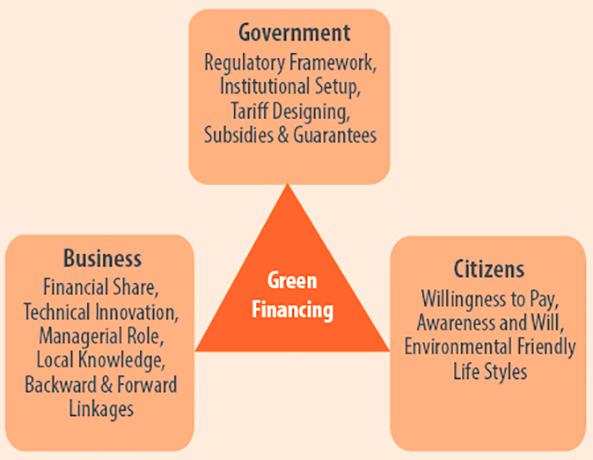
Key Points
- About:
- Green financing is to increase the level of financial flows (from banking, micro-credit, insurance and investment) from the public, private and not-for-profit sectors to sustainable development priorities.
- A key part of this is to better manage environmental and social risks, take up opportunities that bring both a decent rate of return and environmental benefit and deliver greater accountability.
- Need for Climate (Green) Finance:
- Polluter Pays:
- The 'polluters pays' principle is the commonly accepted practice according to which those who produce pollution should bear the costs of managing it to prevent damage to human health or the environment.
- Common but Differentiated Responsibility and Respective Capability (CBDR–RC):
- It acknowledges the different capabilities and differing responsibilities of individual countries in addressing climate change.
- Underlying Principle: Developed Countries historically have been the major environmental polluters.
- Therefore, based on above mentioned principles, the developed countries are morally responsible to provide technology and finance to combat climate change.
- Polluter Pays:
- Status of Climate Financing:
- Expected Contributions from Developed Countries: Required climate finance from developed countries is to transfer USD 1 trillion annually to developing countries to meet their climate targets.
- Actual Contributions by Developed countries: Through the Cancun Agreements in 2010 developed countries committed to a goal of mobilising jointly USD 100 billion per year by 2020 to address the needs of developing countries.
- However, the Glasgow Climate Pact (COP26) noted that the goal of developed country parties has not yet been met.
- In this regard, the COP26 has requested the Standing Committee on Finance to the United Nations Framework Convention on Climate Change (UNFCCC) to prepare a report in 2022 on progress towards achieving the goal of mobilising USD 100 billion per year to address the needs of developing countries.
- Global framework for Climate Financing:
- To facilitate the provision of climate finance, the UNFCCC has established the financial mechanism to provide financial resources to developing country Parties.
- The Adaptation Fund under Kyoto Protocol: It aims to finance concrete projects and programmes that help vulnerable communities in developing countries that are Parties to the Kyoto Protocol to adapt to climate change.
- Green Climate Fund: It is the financial mechanism of the UNFCCC, established in 2010.
- India has been pushing for rich countries to meet their Paris Accord climate finance commitment of USD 100 billion per year.
- Global Environment Fund (GEF): GEF has served as an operating entity of the financial mechanism since the Convention came into force in 1994.
- It is a private equity fund focused on seeking long term financial returns by investments in clean energy under climate change.
- GEF also maintains two additional funds, the Special Climate Change Fund (SCCF) and the Least Developed Countries Fund (LDCF).
- To facilitate the provision of climate finance, the UNFCCC has established the financial mechanism to provide financial resources to developing country Parties.
Climate Financing in India
- Financing From Domestic Resources: India’s climate actions have so far been largely financed by domestic resources.
- According to India’s Third Biennial Update Report 2021 to the UNFCCC between 2014 and 2019, while the Global Environment Facility and Green Climate Fund has provided grants to a total of only US USD 165.25 million, the corresponding domestic mobilisation amounts to USD1.374 billion.
- Funds for Green Financing: Green financing related to climate change is majorly mobilised from National Clean Energy Fund (NCEF) and National Adaptation Fund (NAF).
- The Government of India also provides funding through eight missions established under the National Action Plan for Climate Change.
- It has established a Climate Change Finance Unit (CCFU) in the Ministry of Finance, which is the nodal agency for all climate change financing matters.
Recent Indian Government Initiatives
- Perform Achieve and Trade (PAT) Scheme: The government has undertaken the PAT scheme, targeting carbon emission reduction in 13 energy intensive sectors.
- Encouraging Foreign Capital: The Government has permitted Foreign Direct Investment (FDI) up to 100 percent under the automatic route in the renewable energy sector.
- Encouraging Renewable energy:
- The Government has waived inter-state Transmission System (ISTS) charges for inter-State sale of solar and wind power for projects.
- Making provisions for Renewable Purchase Obligation (RPO) and setting up Renewable Energy parks
- Announcement of the National Hydrogen Mission.
- India’s Nationally Determined Contribution: Under the Paris Agreement which was adopted by signatory countries in 2015, India had submitted Nationally Determined Contribution (NDC) with quantified targets
- To reduce the emissions intensity of its Gross Domestic Product (GDP) by 33-35% till 2030 from the levels at 2005,
- To achieve about 40% cumulative electric power installed capacity from non-fossil fuel-based energy resources by 2030,
- To create an additional carbon sink of 2.5-3 billion tonnes of carbon dioxide equivalent through additional forest and tree cover by 2030.
Way Forward
- Expanding Scope of Collaboration: Multi-stakeholder partnerships should be promoted to include major actors in financial markets, banks, investors, micro-credit entities, insurance companies along with the public sector.
- Holistic Framework: Green financing could be promoted through:
- Changes in countries’ regulatory frameworks.
- Harmonising public financial incentives.
- Increases in green financing from different sectors.
- Alignment of public sector financing decision-making with the environmental dimension of the Sustainable Development Goals,
- Increases in investment in clean and green technologies.
- Financing for sustainable natural resource-based green economies and climate smart blue economy.
- Increase use of green bonds.
International Relations
Mission Sagar
For Prelims: Mission Sagar, Location of Mozambique, Indian Ocean Region, ASEAN countries.
For Mains: Mission Sagar and its significance for India
Why in News
Recently, Indian Naval Ship (INS) Kesari has reached the Port of Maputo, Mozambique to deliver 500 tonnes of food aid to support the efforts of Government of Mozambique to cope with ongoing drought and concurrent challenges of pandemic.
- India has also delivered two fast interceptor craft and self-defence military equipment to Mozambique.
- This is the eighth such deployment in consonance with the Prime Minister' s vision of Security And Growth for All in the Region (SAGAR) and is being conducted in close coordination with the Ministry of External Affairs, and other agencies of the Government of India.
Key Points
- Mission Sagar:
- Launched in May 2020, 'Mission Sagar’ was India’s initiative to deliver Covid-19 related assistance to the countries in the Indian Ocean Littoral states. The countries included were Maldives, Mauritius, Madagascar, Comoros and Seychelles.
- Under ‘Mission Sagar’, the Indian Navy has been deploying its ships to send medical and humanitarian aid to the counties in the Indian Ocean Region (IOR) and beyond.
- Under the mission, the Indian Navy has delivered assistance of more than 3,000 metric tons of food aid, over 300 metric tons of liquid medical oxygen, 900 oxygen concentrators and 20 ISO containers to 15 friendly foreign countries.
- In November 2020, as part of Mission Sagar-II, INS Airavat delivered food aid to Sudan, South Sudan, Djibouti and Eritrea.
- Mission Sagar-III is part of India’s Humanitarian Assistance and Disaster Relief (HADR) assistance to friendly foreign countries during the ongoing Covid-19 pandemic.
- The assistance has been delivered to Vietnam and Cambodia. It highlights the importance accorded to ASEAN countries and further strengthens the existing bonds.
- Launched in May 2020, 'Mission Sagar’ was India’s initiative to deliver Covid-19 related assistance to the countries in the Indian Ocean Littoral states. The countries included were Maldives, Mauritius, Madagascar, Comoros and Seychelles.
- Significance:
- India’s extended Maritime Neighbourhood:
- These deployments were conducted in solidarity with India’s extended Maritime Neighbourhood and highlights the importance accorded by India to these special relationships.
- This is in continuance with India’s role as the first responder at a time of an exigency to the friendly nations.
- Useful in Tackling Terrorism:
- The equipment will be useful as Mozambique is hit by terrorism in its North.
- Terrorist group Islamic State, also known as Da’esh, and its affiliates have rapidly spread in Central Africa.
- The equipment will be useful as Mozambique is hit by terrorism in its North.
- Tackling Common Maritime Challenges:
- This also helps in tackling common maritime challenges (traditional maritime conflicts between nation-states, environmental threats, threats by non-state actors (maritime terrorism and piracy), illicit maritime trades and trafficking) in the region.
- This was a major theme of discussion at the second edition of the Goa Maritime Conclave in November (2021) which brings together countries in the Indian Ocean Region.
- India’s extended Maritime Neighbourhood:
Vision ‘SAGAR’
- Security and Growth for All in the Region (SAGAR) was launched in 2015. It is India’s strategic vision for the Indian Ocean Region (IOR).
- Through SAGAR, India seeks to deepen economic and security cooperation with its maritime neighbours and assist in building their maritime security capabilities.
- Further, India seeks to safeguard its national interests and ensure the Indian Ocean region to become inclusive, collaborative and respect international law.
- The key relevance of SAGAR emerges when seen in conjunction with India’s other policies impacting the maritime domain like Act East Policy, Project Sagarmala, Project Mausam, India as ‘net security provider’, focus on Blue Economy etc.
Important Facts For Prelims
Typhoon Rai
Why in News
The official death toll of Typhoon Rai (locally named Odette) which hit parts of the Philippines in mid-December, was raised to 388.
- Rai is the strongest storm to hit the disaster-prone archipelago this year (2021).
Key Points
- Typhoons are a kind of storm. The storms, depending on where they occur, may be called hurricanes, typhoons or cyclones.
- Typhoons: In the China Sea and Pacific Ocean.
- Hurricanes: In the West Indian islands in the Caribbean Sea and Atlantic Ocean.
- Tornados: In the Guinea lands of West Africa and southern USA.
- Willy-willies: In north-western Australia and
- Tropical Cyclones: In the Indian Ocean Region.
- The scientific name for all these kinds of storms is tropical cyclones.
- Tropical cyclones are intense circular storms that originate over the warm tropical oceans with speed more than 119 kilometres per hour and heavy rains.
- Tropical cyclones rotate counterclockwise in the Northern Hemisphere.
- The Regional Specialized Meteorological Centre (RSMC) Tokyo - Typhoon Centre assigns a typhoon a name. The name ‘Rai’ is contributed by Micronesia.

